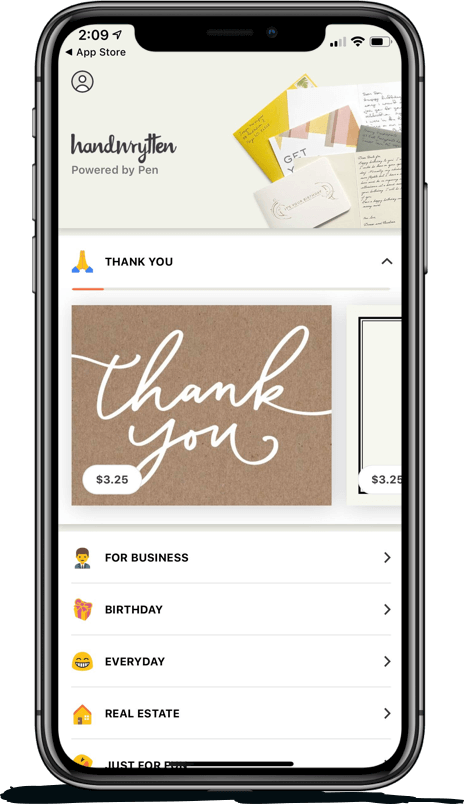
9280 S. Kyrene Rd.
Suite 134
Tempe, AZ 85284
Phone: +1 (888) 284-5197
Email: contact@handwrytten.com



You have been subscribed. Thank you!
If you’re new to account-based marketing (ABM), this complete beginner’s guide will teach you everything you need to know. We’ll cover what ABM is, why it’s effective, and how you can get started with your own ABM program. By the end of this guide, you’ll be ready to start generating more qualified leads and closing more deals.
Account-based marketing (ABM) is a strategic approach to B2B marketing that focuses on key accounts instead of individual leads. In ABM, businesses identify and target specific accounts that they believe are more likely to convert into customers. They then tailor their marketing efforts to these accounts, using personalized messages and targeted content.
ABM can be an effective way to win new business, as it allows businesses to focus their resources on high-value accounts. It can also help B2B companies build relationships with key decision-makers within target accounts, which can lead to repeat business. B2B marketers are turning to ABM marketing as part of their sophisticated marketing mix, while the investment might be substantial, the revenue potential from the businesses you’re targeting often justifies it.
There are many reasons why account-based marketing is effective. First, it allows you to focus your resources on a select group of high-value accounts. This ensures that you are able to provide the personalized attention that these accounts need in order to be successful. Additionally, account-based marketing provides you with valuable insights into the specific needs and wants of your target accounts. This allows you to tailor your marketing messages and strategies to better meet their needs. Finally, account-based marketing helps to build long-term relationships with your target accounts. These relationships are essential for continued success and growth.
B2B sales often have a longer sales cycle. By nurturing relationships over time, through personalized content, your sales and marketing teams can stay top of mind until the prospect is ready to buy.
There are a number of ways that your business can benefit from an ABM strategy:
The following 7 step marketing framework can be useful for building an effective Account Based Marketing Strategy.
The first step in any account-based marketing strategy is to define your ideal customer profile. This will help you identify the specific type of companies and decision-makers that you want to target.
To do this, consider your ideal customer’s industry, size, location, and other factors. You should also research their specific needs and pain points. Once you have a good understanding of your ideal customer, you can start to create targeted content and campaigns that will resonate with them.
It is often easier to come up with buyer personas on the personal level and then work backwards to determine what industries or companies might have such personas.
Once you know who your ideal business target is, the next step is to identify the key decision-makers within those companies. These are the people who have the power to make decisions about what products or services their company buys.
To find out who these people are, you can research online, use LinkedIn and Facebook to prospect, or use third-party data to identify names of potential contacts. Consider asking your current customers for introductions. Once you have a list of decision-makers, you can start to create targeted content and campaigns specifically for them.
Key accounts are those that are recognized by organizations as being a priority for account-based marketing.
Not all accounts meet the requirements to be designated as a strategic or key account and organizations need to be careful about which accounts to focus on for their account-based marketing efforts or risk losing a valuable client. Organizations should take into account a number of factors when choosing clients, including revenue history, account history, margins and profitability. They should also consider whether the client in question is interested in a long-term relationship.
Tailor your content to the specific account and/or contacts you’re targeting.
For example, if you’re targeting a large company with multiple locations, you might create content that speaks to each location’s unique needs.
Or, if you’re targeting a small business owner who is also a parent, your content might focus on how your product or service can help them balance work and family life.
Send personal outreach to each of your target clients
Direct mail is a great way to reach out to your target accounts and contacts. You can use direct mail to send personalized letters, postcards, or even small gifts.
Send targeted emails, personalized with their name, company and how your service can benefit them. Email marketing technology, such as Salesloft can handle this for you. Or, consider sending personalized campaigns using video mail with marketing tools such as Bonjoro.
Phone calls are another great way to reach out to your target. One of the most important aspects of account-based marketing is creating targeted content that speaks directly to your ideal customers
Use handwritten notes. Handwritten notes have been shown to be the most personal way to reach out while not being annoying (unlike phone calls). They are also considered surprising and create an excellent customer experience.
For more information on Handwrytten’s outreach playbook. please read our blog post!
There are four main types of buyers in a B2B setting:
In order to effectively reach these different types of buyers, you need to tailor your content and sales pitch accordingly . For example, if you are targeting lone wolves , your content should be easy to consume and understand quickly since they don’t have time for anything else. On the other hand, if you are targeting influencers , you need content that is thought-provoking and comprehensive since they will want to share it with others .
Use networking opportunities to build relationships with key decision-makers. Leverage your professional associations, industry events and conferences, or simply ask around to identify key contacts at the companies that interest you. Establishing yourself as an expert in your field will give you greater credibility as a potential agency partner.
Account-based marketing requires a constant lens on the news occurring in your target organizations so you know when to reach out.
It’s important to nurture your leads in order to turn them into customers. There are a few key ways to do this: first, stay in touch with your leads regularly (via email, phone call, handwritten notes and more) and keep them updated on your products or services. Secondly, offer them exclusive deals or discounts that will incentivize them to buy from you. Finally, make sure your sales team is following up with leads in a timely and professional manner.
Learn your leads birthdays and other key anniversaries (work, marriage or key purchase). Follow up with handwritten cards and maybe include a gift card for coffee or to a favorite brand.
By following these simple tips, you’ll be well on your way to converting more leads into paying customers.
Look at the number of deals closed as a result of your ABM campaign. You can also look at the number of leads generated, the number of meetings booked and the number of opportunities created.
It’s important to keep track of your progress so you can make adjustments if necessary. You should have some KPIs for your sales funnel in place that you can monitor on a regular basis, such as the number of meetings booked, opportunities created and deals closed along with return on investment. You should also keep track of any changes in engagement from your target accounts. The most successful ABM programs are highly personalized marketing approach and use a mix of traditional and digital marketing tactics to reach their target audiences.
ABM can be an extremely effective way to penetrate large, complex accounts. By personalizing your messaging to each account and each decision maker, you can create a tailored sales experience that resonates with your prospects. And since ABM aligns your sales and marketing efforts around a common goal, you can achieve better alignment and coordination between these teams, leading to more successful campaigns.
If you’re looking for a way to increase your pipeline opportunities and close more deals, then consider implementing an account-based marketing program.


Scale your handwritten outreach, creating positive impressions and long lasting bond.
Sign Up Today!


Over 100 designs to choose from or design your own. Our online card customizer makes it simple.
Check Out Our Cards!





